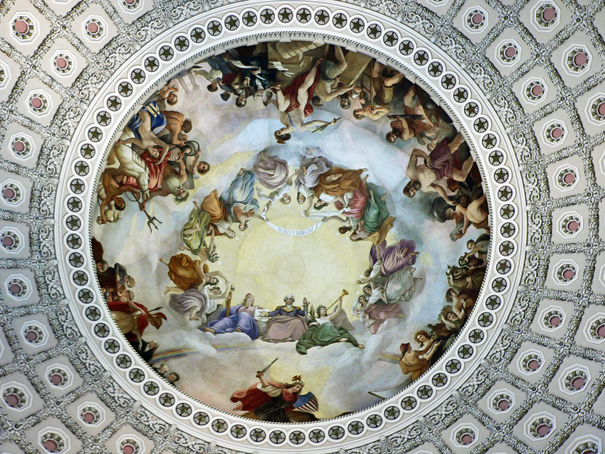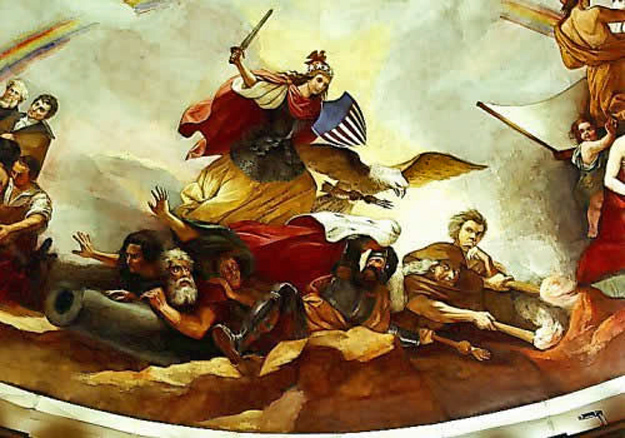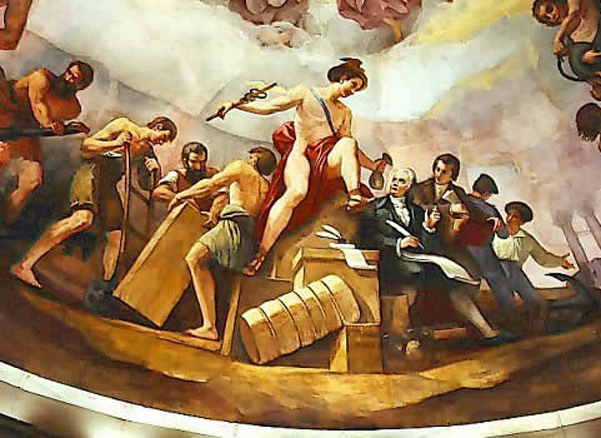
I will freely admit that I am quite a fan of Dan Brown and the esoteric quality or at least energy that he brings to his writing. Though he writes fiction he is able to make what is unbelievable almost believable. He brings insight or he possibly provokes thought, if that is possible in America today, whether his subject is contemporary politics as he did in Digital Fortress or theology as he did in the Da Vinci Code. He then challenges our 'Ethical Soul' to confront the question of good and evil as well as right or wrong in Angels and Demons.
The Lost Symbol I find intriguing because I live in Northern Virginia and know the Washington, DC area well, so there is definite interest even when he is wrong using his artistic license to capture us in his story as he unfolds events that become more intricate as he proceeds in a very improbable tale. What I find unique and brings an important dimension to Mr. Brown's story is his use of Free Masonry. First, I admit that I know very little about Free Masonry beyond what I have read in this novel and the internet. If any Mason reads this and takes offense at what I say, I apologize before I begin.
What first impresses me that it transcends individual religious beliefs but still holds close an all loving creative, deity by whatever name one might use. The central questions in this novel, as I see it and which Mr. Brown has presented to his readers before, are good and evil; right and wrong; and what is most important to this story is the recognition of the ethical and the moral. All we have to do is turn on the evening news and see these questions being discussed whether it is religion, sexuality, race, and how we view the function of government in a multi ethnic, racial, and cultural society. Robert Langdon in Dan Brown's novels talks about archetypes and I think the New World presented one that was far different than could be found in the Old World. That archetype is 'HOPE' - it is freedom from despotism, it is egalitarianism from the indifference of the privilege, and many alternatives that are not limited by a selfish greed that denies our neighbors right live with the expectations as we do regardless of religion, national origin, and especially of race. Again, it is my belief you cannot read Dan Brown without confronting these issues in one form or the other.
The Apotheosis of Washington is an image that would seem very strange to most of us but not one that would have been viewed that way by many of our 'Founding Fathers' among whom George Washington was a Mason. He unlike other slave owning founding fathers did free his slaves upon his death. He did what was moral, ethical, and right.

The Apotheosis of Washington is the very large fresco painted by Italian artist Constantino Brumidi in 1865 and visible through the oculus of the dome in the rotunda of the United States Capitol Building. The fresco is suspended 180 feet above the rotunda floor and covers an area of 4,664 square feet. The figures painted are up to 15 feet tall and are visible from the floor below. The dome was completed in 1863, and Brumidi painted it over the course of 11 months at the end of the Civil War. He was paid $40,000 ($583,093 in 2008) for the fresco.
Brumidi had worked for three years in the Vatican under Pope Gregory XVI, and served several aristocrats as an artist for palaces and villas, including the prince Torlonia. He immigrated to the United States in 1852, and spent much of the last 25 years of his life working in the Capitol. In addition to The Apotheosis of Washington he designed the Brumidi Corridors.
The Apotheosis of Washington depicts George Washington ascending to the heavens (apotheosis - the elevation or exaltation of a person to the rank of a god). Washington, the first U.S. President and Commander-in-Chief of the Continental Army during the American Revolutionary War, is allegorically represented, surrounded by figures from classical mythology. Washington is draped in purple, a royal color, with a rainbow arch at his feet, flanked by the goddess Victory (draped in green, using a horn) to his left and the Goddess Liberty to his right. Liberty wears a red cap, symbolizing emancipation, from a Roman tradition where sons leaving the home would be given a red cap. She holds a fasces in her right hand and an open book in the other.
Forming a circle between Liberty and Victory are thirteen maidens, each with a star above their heads, representing the original thirteen colonies. Several of the maidens have their backs turned to Washington, said to represent the colonies that had seceded from the Union at the time of painting.
Surrounding Washington, the two goddesses, and the 13 maidens are six scenes lining the perimeter, each representing a national concept allegorically: from directly below Washington in the center and moving clockwise, "War," "Science," "Marine," "Commerce," "Mechanics," and "Agriculture":

Freedom, also known as Columbia, is directly below Washington in the personification of War. The scene depicts a woman fighting for liberty with a raised sword, a cape, and a helmet and shield (in the colors of the American flag) trampling figures representing Tyranny and Kingly Power. To Freedom's left assisting her is a fierce bald eagle (the bald eagle is the national bird of the United States) carrying arrows and a thunderbolt (reminiscent of the arrows carried by the eagle in the Great Seal of the United States).

Minerva, the Roman goddess of crafts and wisdom, is portrayed with helmet and spear pointing to an electrical generator creating power stored in batteries next to a printing press, representing great American inventions. American scientists and inventors Benjamin Franklin, Samuel F. B. Morse, and Robert Fulton watch. In the left part of the scene a teacher demonstrates the use of dividers.

This scene shows Neptune, the Roman sea-god, with trident and crown of seaweed riding in a shell chariot drawn by sea horses. Venus, goddess of love born from the sea, is depicted helping to lay the transatlantic telegraph cable which ran from America to the Telegraph Field in Ireland. In the background is an ironclad warship with smokestacks.

Mercury, god of commerce, with his winged petasos and sandals and a caduceus, is depicted giving a bag of gold to American Revolutionary War financier Robert Morris. To the left, men move a box on a dolly; on the right, the anchor and sailors lead into "Marine."

Ceres, the goddess of agriculture, is shown with a wreath of wheat and a cornucopia, symbol of plenty, while sitting on a McCormick mechanical reaper. The personification of "Young America" in a liberty cap holds the reins of the horses, while the goddess Flora gathers flowers in the foreground.
Source: Wikipedia
Return to Pagina Artis
Return to Bruce and Bobbie's Main Page.